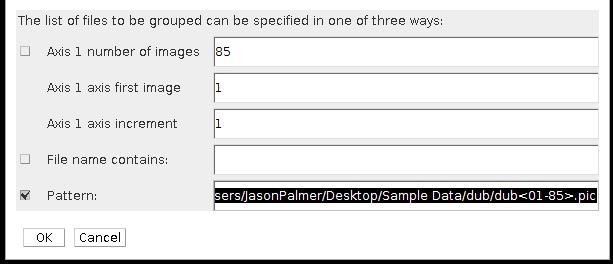

For example, entering 50 reduces theĪmount of memory needed to open the stack by 75%.Ĭhecking Convert to RGB allows a mixture of RGB and grayscale images to be opened. Enter a value less than 100 in Scale Image reduces memory requirements. Enter a string into the File Name Contains field and ImageJ will only open files whose name contains that Set Increment to "2" to open every other image, to "3" to open every Use the Number of Images field to specify how many images to open. To open the images as a "virtual" (disk-resident) stack. Specify which images to open, to reduce the image size, to convert to a different type, or In the first dialog, select one of the images in the folder and click "Open". There are two dialog boxes: one to select the folder and one They can be in TIFF, JPEG, DICOM, BMP, GIF, FITS or PGM format, The images must all be the same size and type.
CZI FILE IMAGEJ SERIES
Opens a series of images in a folder as a stack. This submenu lists the installed image acquisition plugins. The submenu contains a list of the last 15 files opened, allowing them to be easily retrieved.

The sample images are useful for creating sample macros that use the same image, Press "i" ( Image>Show Info) to display the tags of the DICOM samples. This submenu opens example images downloaded from the ImageJ Web site.

Note that most MJPG (motion-JPEG) formats are not read correctly.Īttempts to open AVIs in other formats will fail. ImageJ only supports uncompressed AVIs, various YUV 4:2:2 compressed formats, and PNG or JPEG-encoded PGM (Portable GreyMap), PBM (Portable BitMap) and PPM (Portable PixMap)Īre simple image formats that use an ASCII header.Ī description of these formats can be found atĪ/~pbourke/dataformats/ppm/.ĪVI (Audio Video Interleave) is a container format which can contain data encoded in many different ways. Use Image>Show Info to display the FITS header. ij/download/docs/DICOM_Dictionary.txt.įITS (Flexible Image Transport System) image is the format adopted by the astronomical community for data interchange and archival storage. ImageJ 1.41 and later supportsĬustom DICOM dictionaries, such as the one at The tags are preserved when DICOM images are saved in TIFF format. Imported sequences are sorted by image number instead of by file name and Use File>Import>Image Sequence to import a DICOM sequence. Use Image>Show Info toĭisplay the DICOM header information. Support in ImageJ is limited to uncompressed DICOM files.ĭICOM files containing multiple images open as a stack. Enableĭebugging using Edit>Options>Misc and ImageJ will display the TIFFĭICOM (Digital Imaging and Communications in Medicine) is a standard popular in the medical TIFF files with multiple images of the same type and size open as a stack. TIFF images can be 1-bit, 8-bits, 16-bits (unsigned), 32-bit (real) or RGB color. Additional file formats are supported via Files must be in TIFF, GIF, JPEG, DICOM, BMP, PGM or FITS format.Īlso opens ImageJ and NIH Image lookup tables (with ".lut" extension). Reads an image and displays it in a separate window. Opens the contents of the operating system clipboard as a new image (requires Java 1.4 or later). Opens the contents of the internal ImageJ clipboard as a new image. Set Slices to a value greater than one to create a stack.Ĭreates a new text window with the title "Untitled.txt". Width and Height specify the image dimensions in pixels. Type is the image type:Ĩ-bit grayscale, 16-bit grayscale (unsigned), 32-bit (float) grayscale or RGB color.įill With (White, Black or Ramp) specifies how the image Name is the title that will be used for the Window. A dialog box allows you to specify the image title, type, This submenu contains commands for creating new images, stacks or text windows.Ĭreates a new image window or stack. Home | contents | previous | next File Menu


 0 kommentar(er)
0 kommentar(er)
